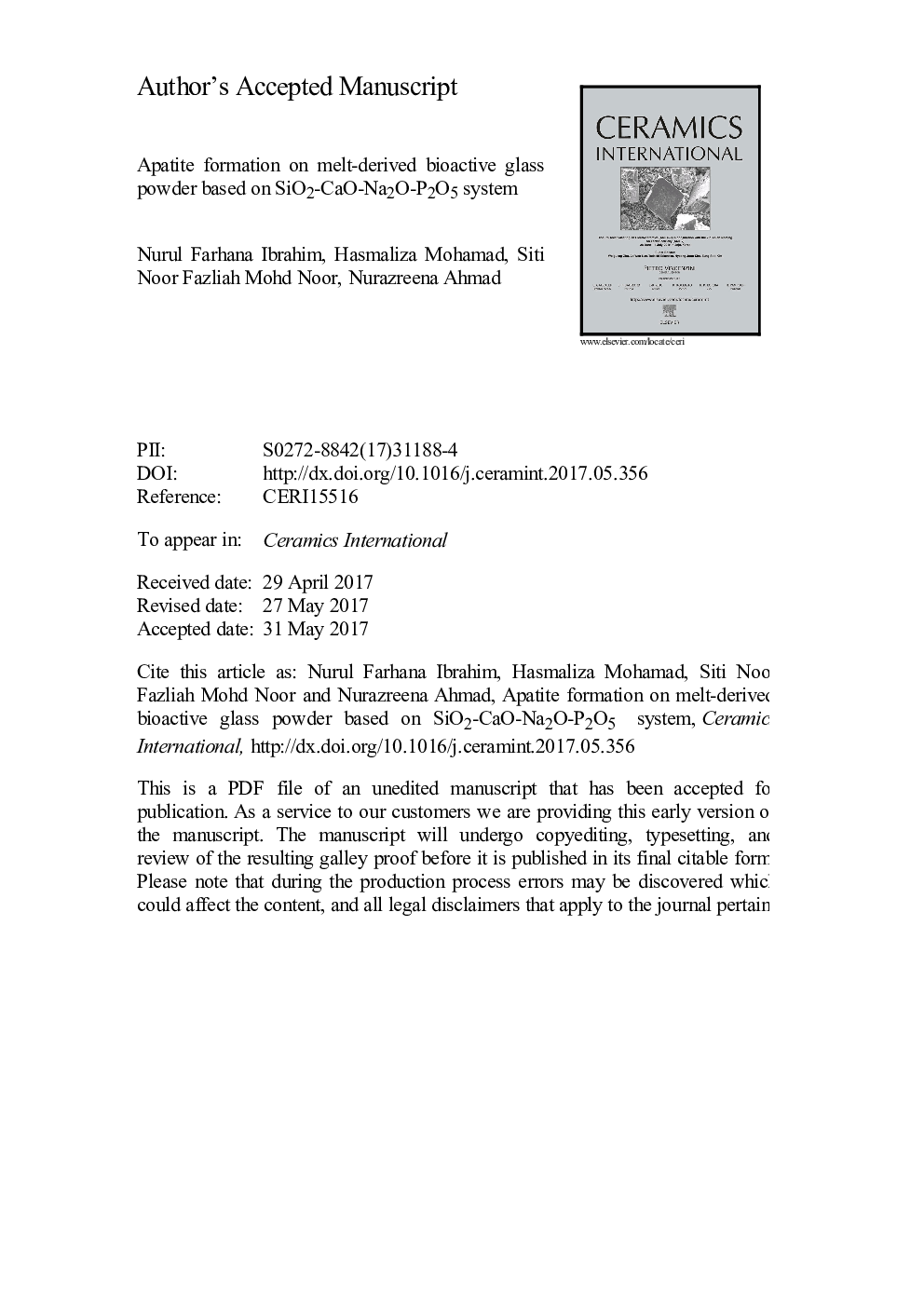| Article ID | Journal | Published Year | Pages | File Type |
|---|---|---|---|---|
| 5437449 | Ceramics International | 2017 | 16 Pages |
Abstract
The higher melting temperature and longer soaking time during conventional glass melting route promoted the search for alternative in developing new bioactive glass (BG) composition with improved in fabrication temperature and melting time. The current project involved fabrication of new BG compositions based on SiO2-CaO-Na2O-P2O5 system via melt derived route. It was confirmed that all bioactive glass composition can be melted at temperature lower than 1400 °C. Formation of Si-O-Si (tetrahedral) functional group highlighted that silicate based glass was established as detected by Fourier transform infrared spectroscope (FTIR). BG bioactivity was performed by incubating the BG powder in Tris-buffer solution (pH 8) for 7, 14 and 21 days. In vitro test confirmed the apatite formation on the bioactive glass surface upon soaking in Tris-buffer solution with characteristic of carbonate group (C-O) and P-O band noticed from FTIR and present of crystalline peak observed in X-ray diffraction (XRD). Morphology of apatite formation on BG surface was observed using scanning electron microscope (SEM).
Keywords
Related Topics
Physical Sciences and Engineering
Materials Science
Ceramics and Composites
Authors
Nurul Farhana Ibrahim, Hasmaliza Mohamad, Siti Noor Fazliah Mohd Noor, Nurazreena Ahmad,
